Natural History |

|
The natural history of a region consists of the study of its rocks and minerals, its geological structures and climate, its panoply of living creatures, and all the ways in which any one of them one affects the others. The historic and biological isolation of the Zymoglyphic region in particular is due in part to the peculiarities of the currents in the surrounding seas, and the dense fogs that sometimes surround the islands. Lacking influence from surrounding areas, some very unusual flora and fauna have evolved in response to evolutionary pressures.
The Natural History Wing of the Zymoglyphic Museum showcases these unique life forms, as well as examining the influence that natural forms have had on the artistic expression of the region.
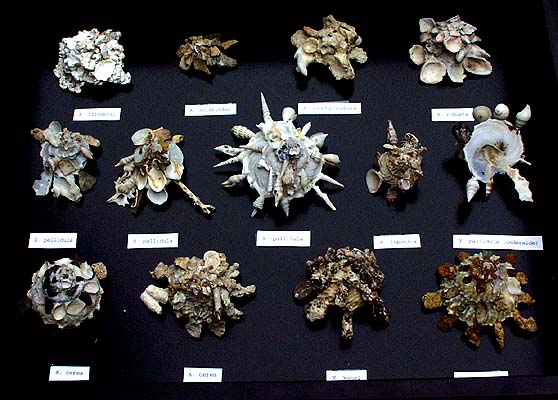 |
Xenophora
A shell collection specializing in marine snails that are themselves collectors of shells, rocks, and other debris from their environment. Popularly known as "assemblage artists of the deep" |

|
Crab Collection
Marine animals that come in a great variety of shapes and proportions, unencumbered by gravity. They are nature's mechanical marvels. |
| Species Endemic to the Zymoglyphic Region |
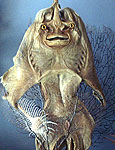 |
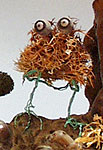 |
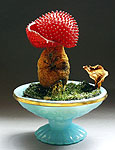 |
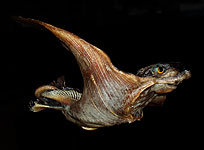 |
| The Zymoglyphic Mermaid |
Flightless Spinybirds |
House Fungus | Leatherwing |
 |
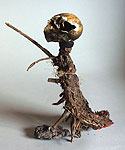 |
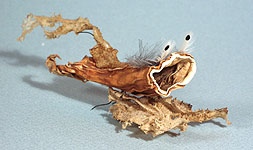 |
 |
| Pond-headed Cactus |
Root Worm | Happy Fish | Eyeball Plants |
The Zymoglyphic Mermaid
The largest and most primitive mermaid species in the museum's collection is affectionately known as "The Zymoglyphic Mermaid" and has become somewhat of a spokesmodel for the museum, Its sinuous body and delightful smile grace the museum shop's drinkware, clocks, and clothing. For more information see here |
Flightless Spinybirds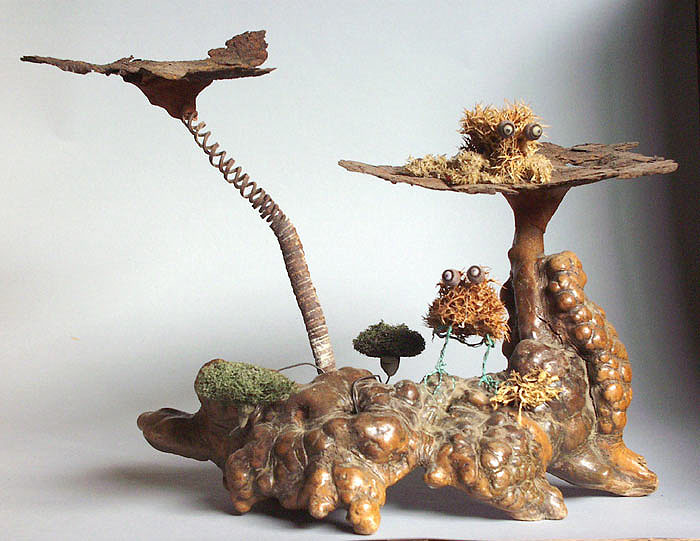
Spinybirds are small, shy, flightless birds that have evolved a unique cactus-like means of defense against the nocturnal predations of the leatherwings. |
Pond-headed Cactus (Aquacephalus sp.)
The mountains of the region produce dense jungles on the windward side of the islands, leaving very little moisture for the leeward side and resulting in deserts. These harsher conditions require some remarkable adaptations for survival. The pond-headed cactus is a plant species that originated in the ocean as a member of the kelp family and has evolved to become a land based species. It carries within it a little bit of the sea. |
Root Worm
The root worm is often found on the forest floor. Its resemblance to an old root causes it to get stepped on and bumped frequently, resulting in a rather irritable disposition. |
House Fungus
The House Fungus grows natively in the denser tropical forests, and looks for all the world like it is made of plastic and an old orange peel. It is in fact a colorful fungus found in the Zymoglyphic region which is commonly grown there as a house plant. The spiky head fills at certain times of the year with a hallucinogenic gas that is highly prized by the native inhabitants. This particular specimen has already made its atmospheric contribution and collapsed into a stupor. |
Happy Fish (Piscatonius delitus)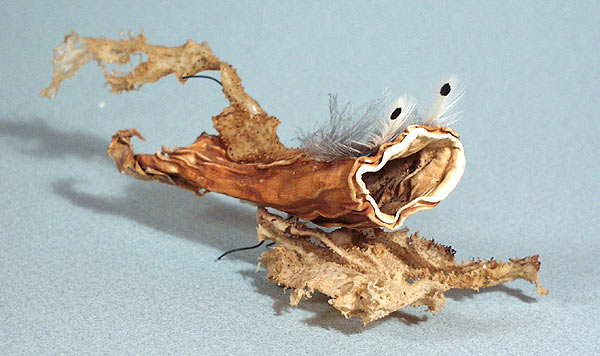
The Happy Fish (Piscatonius delitus) can be found clinging to rocky bottoms in fast-moving waters. Its rough exterior camouflages it well; it might be confused with a random selection of seaweed. Its happy demeanor is thought to be due to its lack of internal organs. Its watery environment just passes right through it. |
Leatherwing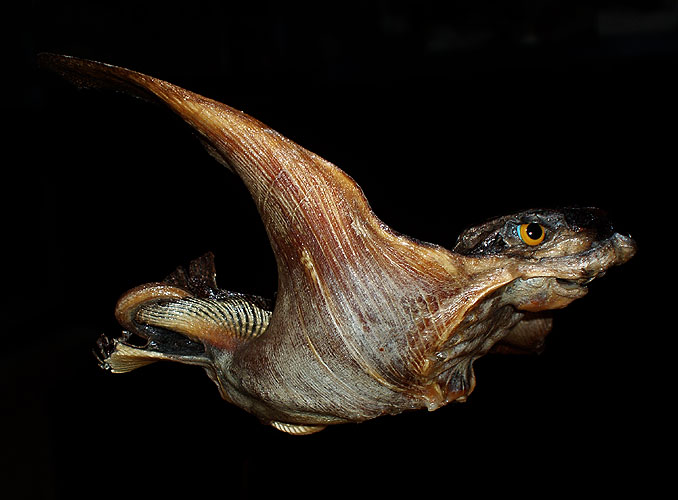
The Leatherwing is a silent, nocturnal creature adapted for long flights from the sea through the jungle. |
Eyeball Plants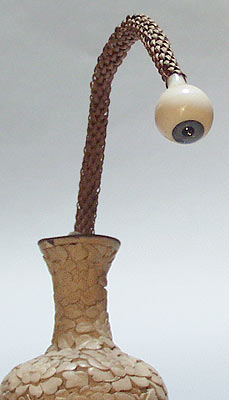
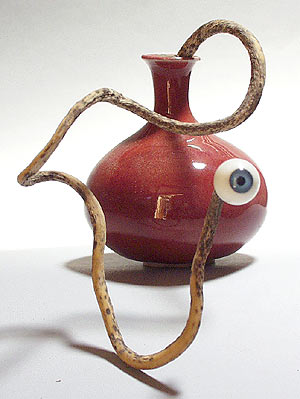
Left: Scaly Eyeball Plant (Ophthalmophytos lepidus) Naturalists peering too deeply into the undergrowth may find themselves being observed in return by the "eyes of the forest". They are the scaly eyeball plant and the convoluted eyeball plant. During the Rust Age, these plants were revered for their oracular qualities, in the belief that they could see into the unknown. |